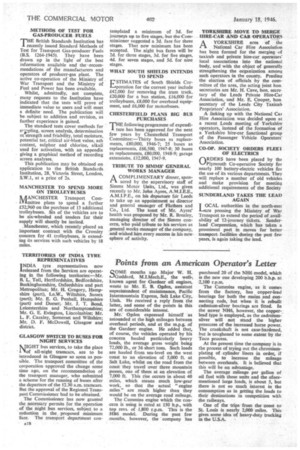Points from an American Operator's Letter
Page 20

If you've noticed an error in this article please click here to report it so we can fix it.
SOME months ago Major W. H. Goddard, M.I.Mech.E., the well-. known agent for Gardner oil engines, wrote to Mr. E. B. Ogden, assistant superintendent of maintenance, Pacific Intermountain Express, Salt Lake City, Utah. He received a reply from the latter, and some of the points in this are of considerable interest.
Mr. Ogden expressed himself as astounded at the high mileages between overhaul periods, Anti at the m.p.g. of the Gardner engine. He added that, of course, the vehicles operated by his concern hauled particularly heavy loads, the average gross weight being 72,000 lb., or 36 short tons. Such loads are hauled from sea-level on the west coast to an elevation of 5,000 ft. at Salt Lake, whilst on the road from the coast they travel over three mountain passes, one of them at an elevation of 7,000 ft. This rise occurs in about 40 miles, which means much low-gear work, so that the actual "engine miles" are much higher than they would be on the average road mileage.
The Cummins engine which the concern is using is rated at 150 h.p., with top revs. of 1,800 r.p.m. This is the H136 model. During the past few months, however, the company has
purchased 20 of the NW model, svhich is the new one developing 200 b.h.p. at 2,100 r.p.m.
The Cummins engine, as it Comes from the factory, has copper-lead bearings for both the mains and connecting rods, but when it is rebuilt cadmium-silver bearings are fitted. In the newer NI46, however, the copperlead type is employed, as the cadmiumsilver will not stand the higher pressures of the increased horse power. The crankshaft is not case-hardened, but is toughened to some extent by the Torn process.
At the present time the company is in the process of trying out the chromiumplating of cylinder liners in order, if possible, to increase the mileage between overhauls. It is believed that this will be an advantage.
The average mileage per gallon of oil fuel with these units and the Aarementioned large loads, is about 5, but there is not so much interest in the consumption as in getting the loads to their destinations in competition with the railways.
One of the trips from the coast to St. Louis is nearly 2,000 miles. This gives some idea of heavy-duty trucking in the U.S.A.




























































